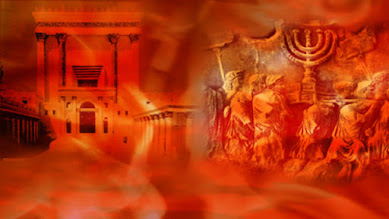Who is Betzalel--and can he really be so important when the Torah says so little about him? Our member Rabbi Paul Bloom lifts the lid on this remarkable personality whose contribution to the building of the Mishkan earned him eternal renown.
Betzalel:
The Hidden Leader Who Built the Mishkan
A new name emerges in the history of the
Jewish people, playing a crucial role in the leadership of the nation at a
defining moment. This individual is not a figure we have encountered before,
nor does he reappear later—yet his impact is profound. Betzalel ben Uri is
entrusted with the monumental task of constructing the Mishkan, the sacred
dwelling place of the Divine, in all its intricate detail, glory, and beauty.
Betzalel’s Lineage and
Spiritual Legacy
Betzalel’s yichus (lineage) is
notable. According to Rashi and Midrashic sources, he is the great-grandson of
Miriam HaNeviah. Miriam married Calev ben Yefuneh, one of the two spies who
remained faithful to Moshe Rabbeinu and resisted the negative report of the
other ten spies. Their son, Hur, according to Chazal, was tragically killed
during the episode of the Golden Calf. Hur’s grandson, Betzalel, now emerges in
Parashat Vayakhel, chosen for his exceptional qualities and unique spiritual
gifts.
The Torah describes Betzalel as being
endowed with “wisdom, understanding, and knowledge” (Chochmah, Binah,
and Da’at). These three attributes encapsulate the full spectrum of
wisdom—intellectual acumen, deep comprehension, and divine inspiration. But why
would an artisan need such profound spiritual qualities? Wouldn’t craftsmanship
alone suffice for building the Mishkan?
The Spiritual Dimensions
of Construction
The Mishkan was not just an architectural
endeavor; it was a spiritual construct, mirroring the very fabric of creation.
The Gemara (Berachot 55a) states that Betzalel knew how to arrange the letters
with which Hashem created the heavens and the earth. This alludes to the
Kabbalistic idea found in Sefer Yetzirah, which describes how each Hebrew
letter contains divine energy. Betzalel was not merely assembling physical
components; he was imbuing each element of the Mishkan with spiritual
significance. Every detail corresponded to an aspect of Ma’aseh Bereishit,
the creation of the world.
This concept has parallels in Halacha.
Certain mitzvot require kavanah—intention—to sanctify objects. For
example, matzot for Pesach must be made leshem
mitzvat matzah, and a sofer writing a Sefer Torah must have the
proper intent when inscribing the Name of Hashem. Betzalel’s task was to infuse
each component of the Mishkan with the right spiritual intent, ensuring it
became a true vehicle for Divine presence.
The Gift of Teaching
Another remarkable quality of Betzalel
was his ability to teach. The Torah states that Hashem not only granted him
wisdom but also lehorot natan belibo—the
ability to instruct others (Shemot 35:34). Ibn Ezra notes that possessing
wisdom and knowing how to convey it are distinct skills. Many brilliant
scholars are poor teachers, unable to translate their knowledge into lessons
others can grasp. Teaching requires empathy, generosity of spirit, and a desire
to share wisdom.
The Mishkan’s construction was a communal
effort, relying on the contributions and labor of the people. The Torah
repeatedly emphasizes kol nediv lev—the
voluntary generosity of the donors. Just as the materials for the Mishkan came
from willing hearts, its construction needed to be guided by a leader who could
transmit wisdom with a generous spirit. Betzalel embodied this ideal, ensuring
that his fellow craftsmen understood not just the technical skills but the
deeper sanctity of their work.
The Danger of Beauty
The name Betzalel—"in the shadow of God"—hints at his unique role.
The Mishkan was designed to be a place of unparalleled beauty, and beauty
carries inherent risks. Art and aesthetics can become ends in themselves,
seducing people into valuing external appearances over inner truth. This was a
hallmark of Greek philosophy, as expressed by the 19th-century poet John Keats:
“Beauty is truth, truth beauty.” In contrast, the Jewish perspective, as seen
in Shema Yisrael, emphasizes hearing
and understanding rather than seeing alone. Beauty must serve a higher
purpose—enhancing our connection to Hashem rather than becoming an object of
worship.
This is why Betzalel required special
divine protection. Tehillim 91, which begins with Yoshev beSeter Elyon, speaks of dwelling in the “shadow of the
Almighty” (Betzel Shakkai). Chazal
associate this chapter with protection from spiritual dangers. Betzalel’s
artistic mastery had to remain in service of holiness, ensuring that the
Mishkan’s beauty elevated rather than distracted.
A Leader of Vision and
Integrity
Betzalel’s role was not just that of a
master craftsman but of a spiritual architect. He understood that sacred work
requires kavanah, generosity, and humility. He was a teacher who uplifted his
people, ensuring they shared in the holiness of the Mishkan’s creation. Most
importantly, he was a leader who maintained perspective—using beauty as a tool
for Avodat Hashem rather than an end in itself.
When Hashem introduces Betzalel to Moshe,
He says, Re’eh karati beshem Betzalel—“See,
I have called Betzalel by name” (Shemot 31:2). The word Re’eh (see) is unusual; the Torah generally prioritizes hearing (Shema) over seeing. The Mishkan was a
visual masterpiece, but its true essence was in its purpose—to create a
dwelling place for the Divine. Betzalel ensured that this goal was never lost.
Though his name fades from the narrative
after the Mishkan’s completion, Betzalel’s legacy endures. His wisdom,
generosity, and devotion remind us that true leadership is about more than
skill—it is about vision, intent, and a deep connection to a higher purpose.










